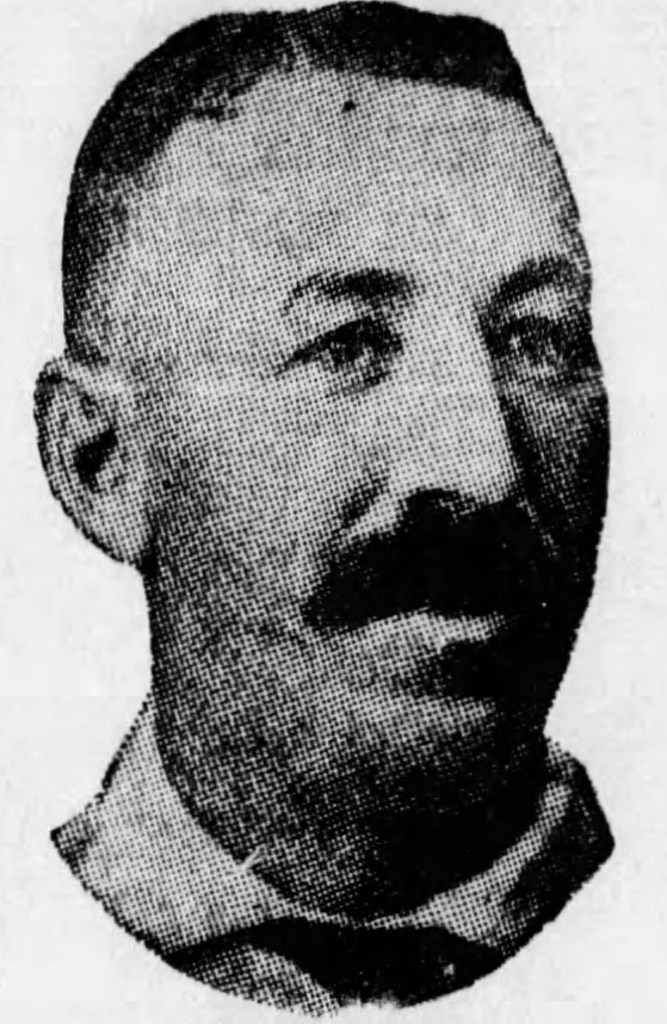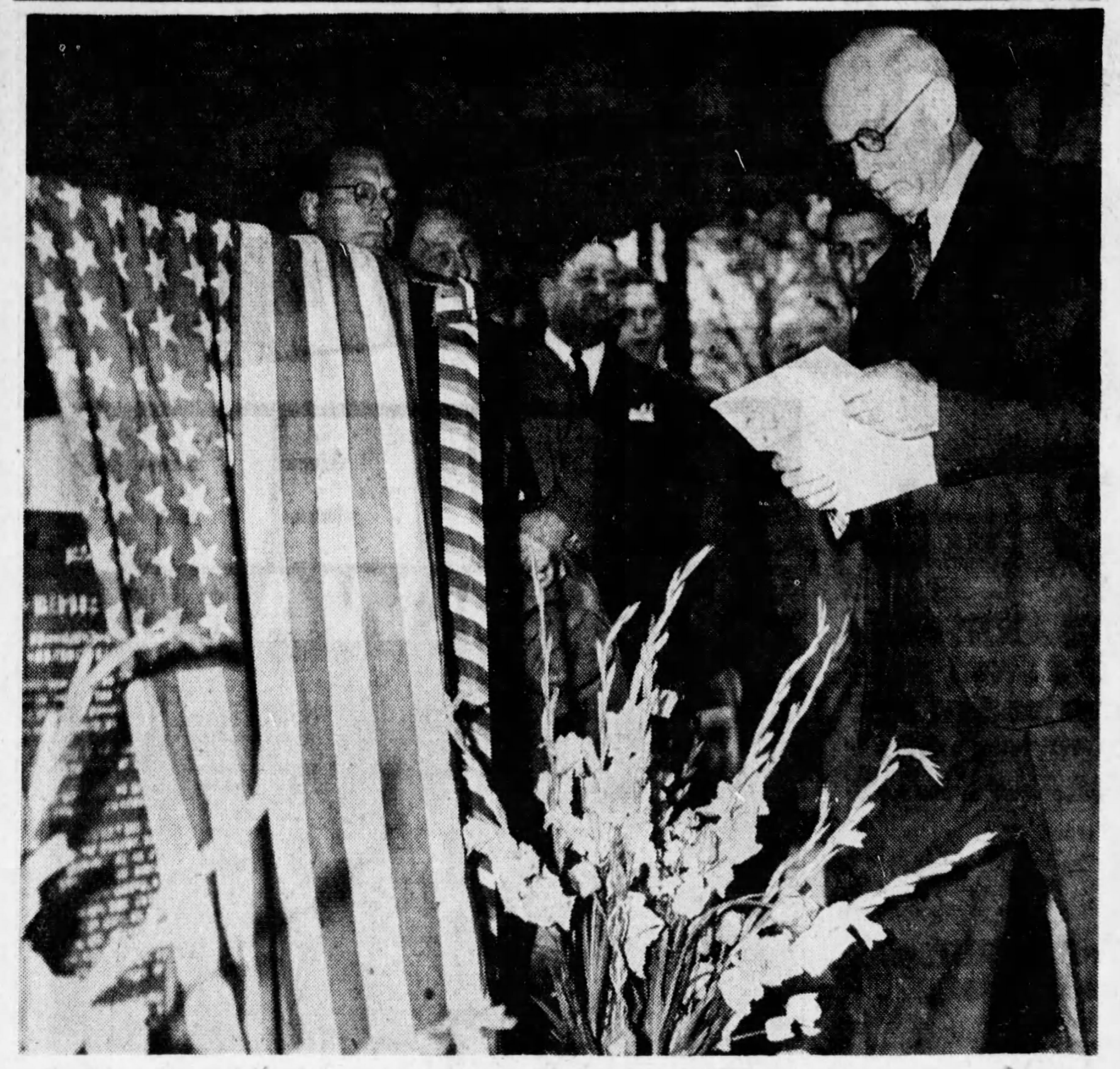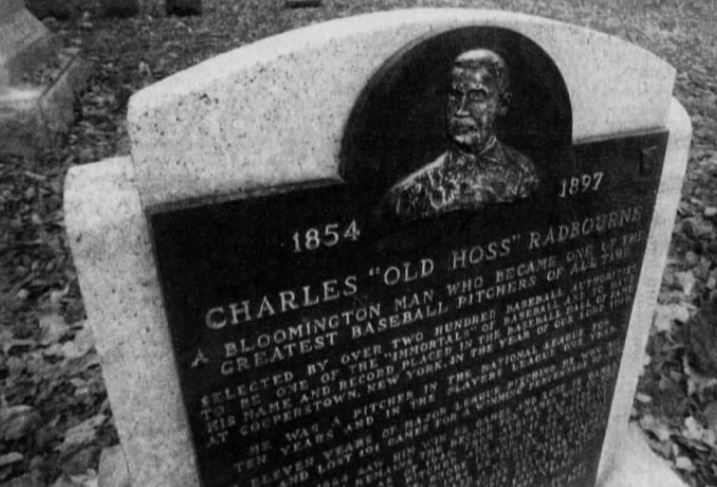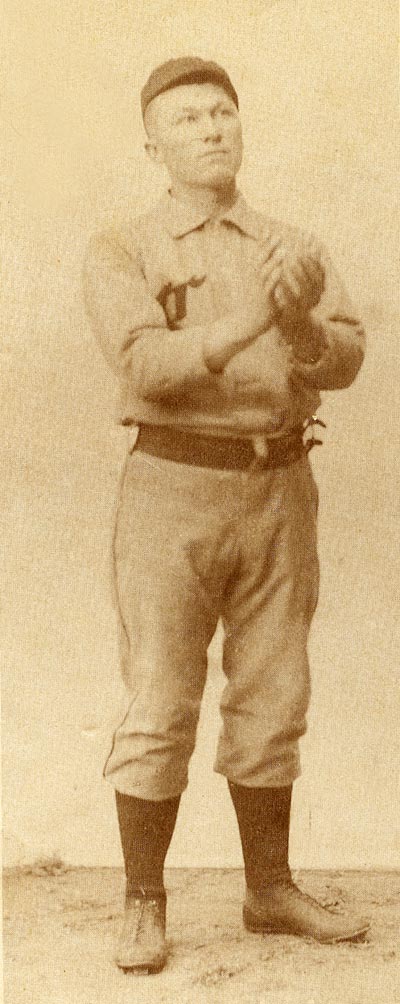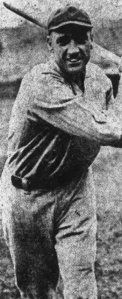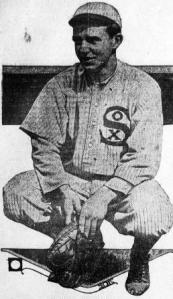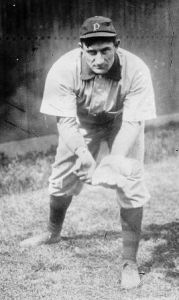March of 1916 was a bad month for “Prince Hal” Chase.
According to The International News Service, Chase, who spent the winter in San Jose, California playing for the Maxwells—a team sponsored by the automobile company–was “the last of the stars” of the defunct Federal League who had still not signed with a professional team.
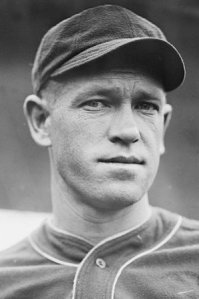
Hal Chase
It got worse when he was arrested for failure to pay alimony and support to his ex-wife Nellie and their son Hal Jr.
He was released on $2000 bond, and it is unclear whether the case was ever fully adjudicated. After his release, Chase continued playing with the Maxwells and working out with Harry Wolverton‘s San Francisco Seals while rumors of who he would play for during the regular season were advanced on a daily basis.
The strongest rumors were that Chase would go to the New York Giants in a deal which would include Fred Merkle, who would be displaced at first base, going to the Chicago White Sox, the team Chase jumped to join the Federal League.
The Pittsburgh Post-Gazette said the deal was eventually foiled by Pirates Manager Jimmy “Nixey” Callahan, who “refuse(d) to waive.”
At the same time the papers in Cincinnati said Chase would be joining the Reds while West Coast papers said he might stay in California and join the Seals.
The Cincinnati Enquirer said Reds’ Manager Charles “Buck” Herzog “vigorously denied,” that Chase would join his club and said he would stick with Frederick “Fritz” Mollwitz at first base.
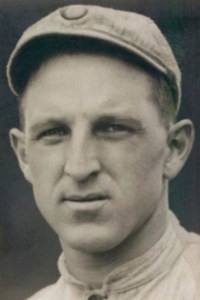
Buck Herzog
Herzog was even more forceful in his denial in The Cincinnati Times-Star:
“I wouldn’t have Chase at the camp. Mollwitz is a very much better player, and he won’t jump when he is most needed.”
An even stronger indictment of Chase came from Detroit Tigers Manager Hugh Jennings, who told The Detroit News:
“As a player, there is nobody who can touch Chase for holding down first base.”
Jennings went on to note Chase’s intelligence, speed, and “superb” fielding:
“Yet for all his ability I would not have him on my club, and I do not believe any other major league manager will take a chance on him. He will not heed training rules and has a demoralizing influence on the younger players.”

Tiger Manager Hugh Jennings
Jennings said while Chase managed the New York Highlanders in 1910 and ’11, led his team “astray,” instead of “trying to keep his players straight.”
Perhaps most damaging, Jennings said Chase was a source of dissent on the clubs he played for:
“One of his favorite stunts is to go around telling on man what another is supposed to have said about him, with the result that in a very short time he has the fellows pulling in all directions instead of working together. He is apt to take a dislike to the manager and work against him with the players until the whole squad is sore and will not give the sort of work that it is paid for.”
Jennings, whose team finished second in 1915 with George Burns at first base, said:
“The Tigers would win the pennant beyond question with a player of Hal’s ability on first this season, but I wouldn’t risk introducing a man who had such a bad disposition. I believe that we can accomplish better results by having harmony on the squad, even if we have to get along with a first baseman with less talent.”
Despite the negative press, and over the objection of Herzog, the Reds purchased Chase’s contract from the defunct Buffalo Blues on April 6.
The New York Times lauded the move and defended Chase against his detractors. The paper said “His failure with the New York Americans was due to petty controversies and rebellion against the club’s discipline,” and “(W)hen he is at his best there is not a player in the major leagues who is more spectacular than ‘Prince Hal.’”
Chase initially balked at reporting to Cincinnati, telling The San Francisco Chronicle “I haven’t made up my mind…it is possible that I would prefer to remain in California, even if there is no chance to play ball.”
Six days later, while his new team opened the season, Chase was on a train to Cincinnati. The Associated Press said he agreed to join the Reds after receiving “word from Cincinnati that his entire contract with the Federal League, which calls for a salary of $8,000 a year, has been taken over,” by the Reds.
When Chase arrived in Cincinnati on April 15, the Reds had won three straight after losing their opener, and Mollwitz had played well at first base with five hits in 13 at-bats and just one error.
According to Frederick Bushnell “Jack” Ryder–college football star and Ohio State football coach turned sportswriter–of The Enquirer, Herzog had no intention of putting Chase in the game April 16:
“Herzog had little thought of playing him, as Fritz Mollwitz was putting up a bang-up game and hitting better than any member of the club,” until “Mollwitz made a bad mental mistake in the third inning.”
After Umpire Hank O’Day called a strike on Mollwitz, “the youngster allowed his tongue to slip,” and was ejected.

Fritz Mollwitz
Chase came to bat with an 0-2 count and doubled off of Pirates pitcher Frank Miller, stole third, and after catcher Tommy Clark walked “(Chase) caused an upheaval in the stands by scoring on (a) double steal with Clark.”
Chase also wowed the crowd in the ninth. After making “a nice stop” on Max Carey’s hard ground ball over first base and with pitcher Fred Toney unable to cover first in time, Chase dove “headforemost to first base to make a putout on the fleet Carey.”
In all, he played 98 games at first base, 25 in the outfield, and 16 at second base, he also hit a league-leading and career-high .329.
While the Reds struggled, Chase was wildly popular in Cincinnati. The Enquirer’s Ryder was possibly his biggest fan—the writer raved about Chase’s performance in the outfield, his adjustment to playing second base, and his consistent bat.
While Chase thrived, Herzog, who had a contentious relationship with Reds’ owner August Herrmann, exacerbated by the signing of Chase against his wishes, began to unravel as the season progressed. On May 30, he was hit in the head and knocked unconscious, by a throw from catcher Ivey Wingo during pregame warm-ups. While he recovered physically, he became increasingly frustrated by the club’s performance. On July 5—with a 29-40 record– he announced that he would retire at the end of the season when his contract expired. He told The Times-Star:
“It would be a great blow to my pride to continue as a player, after being a manager for three years.”
The following day it was reported that the Chicago Cubs and New York Giants were interested in acquiring Herzog. Within a week, it was reported that Herzog was heading to New York in a trade that would bring Christy Mathewson to Cincinnati to manage. The negotiations continued over several days but floundered. The Cubs reentered the picture—Owner Charles Weeghman told The Chicago Daily News “I brought the bankroll along…and I’ll get Herzog so quick I’ll make (the Reds) eyes pop.” He later told the paper he offered “$25,000 and an outfielder” for Herzog.
At the same time The Brooklyn Daily Eagle said the Dodgers were after Herzog, and The Pittsburgh Post said the Pirates were in pursuit as well.
The pressure got to Herzog who held himself out of the lineup of July 17, The Enquirer said:
“The managerial situation is worrying Herzie, who had expected by this time to be cavorting at the third corner for the giddy Giants. With the deal held off for various reasons, the Red leader is naturally a bit anxious.”
Herzog’s destination was unclear, but it was clear he would be gone. With Mathewson seeming to be out of the picture, rumors persisted—fueled by Ryder of The Enquirer and William A. Phelon in The Times-Star—that Chase would be the new manager.
On July 20, Ivey Wingo managed the team to a doubleheader split with the Philadelphia Phillies, and the papers reported on Herzog’s successor:
The Enquirer ran Chase’s picture under the headline “Reds’ New Manager,” although they hedged in another headline which said he would “probably” be named.
The Times-Star said “Hermann has decided to allow Hal Chase to manage the team for the remainder of the season, and for this reason he does not want Mathewson.”
They were both wrong.
Within hours of the papers hitting the streets, a trade involving three future Hall of Famers was agreed to. Herzog, along with catcher Wade “Red” Killefer went to New York for Mathewson, Edd Roush, and Bill McKechnie. Mathewson was immediately named manager.

Cartoon which accompanied the announcement of Mathewson’s appointment.
Ryder said in The Enquirer that “Chase was greeted with a great round of applause” when he stepped to the plate for the first time on July 20:
“The fans at that time did not know of President Herrmann’s change of mind with regard to Matty, and they thought Chase was the new leader of the team. The universal and hearty applause showed how popular the star third-sacker has become in this town.”
The Chase story is well-known; two years later Mathewson would suspend him, charge him with “indifferent playing.” With Mathewson in Europe when the charges were heard by National League President John Heydler that winter, three Reds teammates, and Giants Manager Pol Perritt testified Chase had thrown games.
But in October of 1916 Chase appeared to have repaired his reputation, and his difficult March appeared to be far behind him. In a season wrap-up, The Enquirer–there was no byline on the article, but it was likely the work of Ryder–published a glowing profile of the National League’s leading hitter and the man who nearly became the Reds’ manager:
“What has become of all the talk about Chase being a bad actor, a disorganizer, a former of cliques and a knocker of managers? All gone to the discard. Chase has not only played brilliant ball for the reds all season, but he has been loyal to the club and the managers. He worked hard for Herzog and equally hard for Matty. He has been a wonderful fellow on the club. Chase is modest and does not seek notoriety or approbation…He played game after game in midseason when he was so badly crippled with a Charley horse that he could scarcely walk. When Manager Herzog wanted to make an outfielder out of him he went to the garden and played sensational ball…Later in the season he filled in for several games at second base, a difficult position for a left-hand thrower, but he put up great ball there. He is a natural ballplayer of the highest class, and with it all a perfect gentleman, both on and off the field.”
The profile concluded with this assessment of the man who would become synonymous with the baseball’s greatest sins:
“Chase has been a great man for the Reds, and there is many a manager of today who wishes that he had got in ahead of the Cincinnati club in signing him. He is the smartest ballplayer and the quickest thinker in the National League today. He is a model for the young ballplayer to emulate, because he is a real artist in his profession.”
Tags: August Herrmann, Bill McKechnie, Buck Herzog, Buffalo Blues, Charles Weeghman, Chicago Cubs, Chicago White Sox, Christy Mathewson, Cincinnati Reds, Detroit Tigers, Edd Roush, Federal League, Frank Miller, Fred Merkle, Fred Toney, Fritz Mollwitz, George Burns, Hal Chase, Hall of Fame, Hank O'Day, Harry Wolverton, Hughie Jennings, Ivey Wingo, Jack Ryder, John Heydler, Max Carey, National League, New York Giants, New York Highlanders, Nixey Callahan, Philadelphia Phillies, Pittsburgh Pirates, Pol Perritt, Red Killefer, San Francisco Seals, San Jose Maxwells, Tommy Clark, William A Phelon

